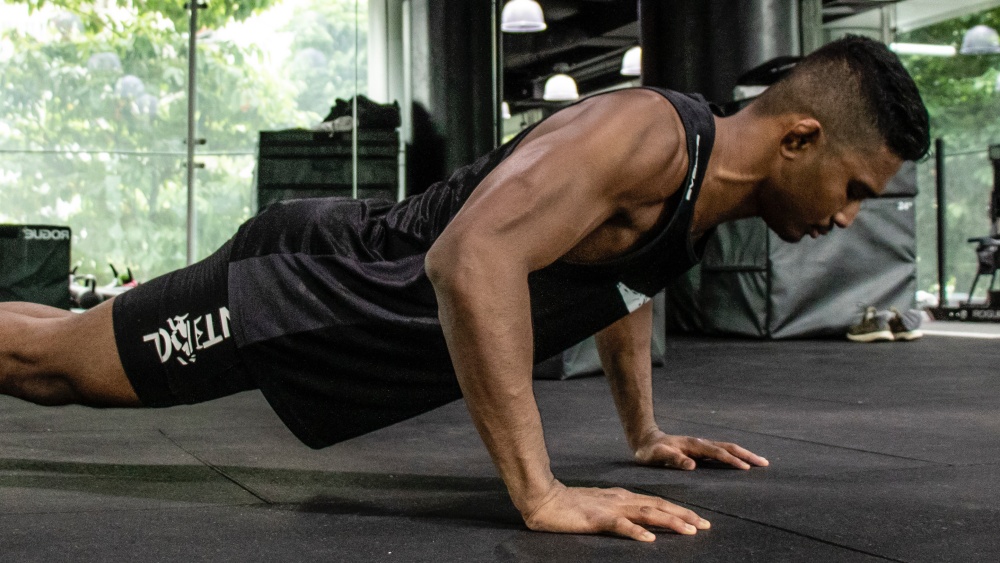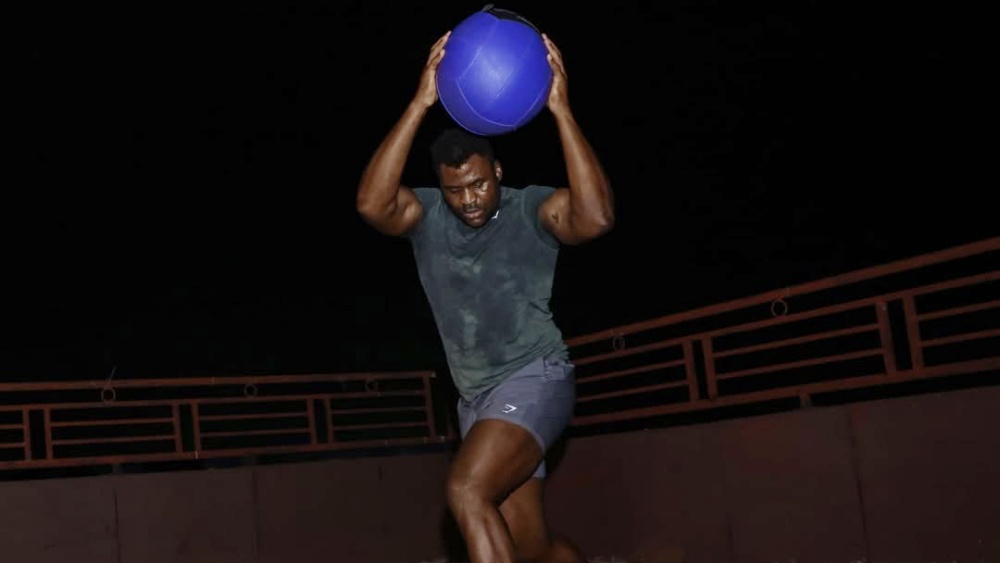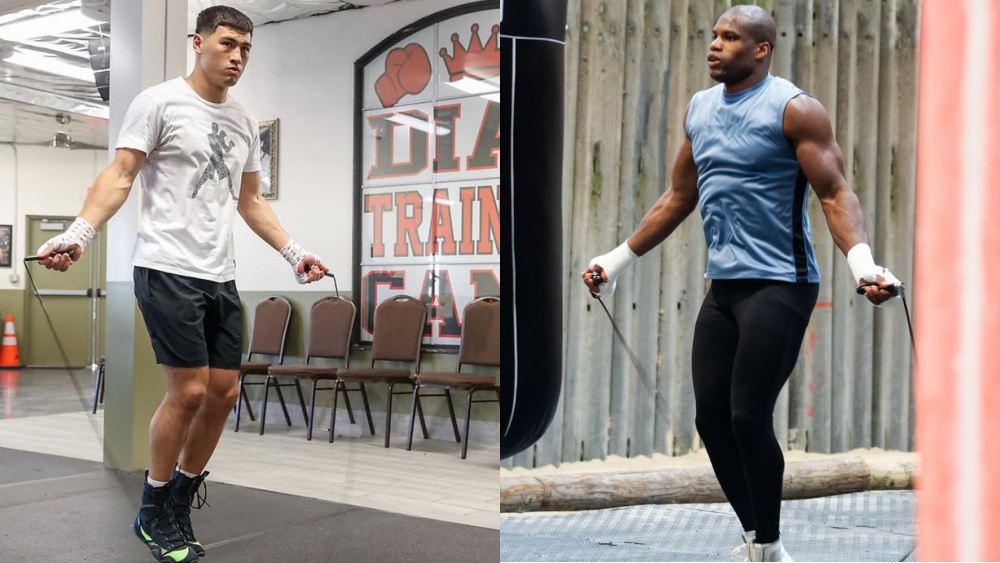Big, defined shoulder muscles improve your functional strength, posture, and physical appearance. You don’t even have to take off your shirt or wear athletic gear all day to show off your rock-solid shoulder muscles. It’s one of those things everyone notices the moment you enter a room.
Some of the things you should focus on when trying to build boulder delts include:
- Consistently Targeting All Three Muscle Heads In The Deltoids: Your deltoids (shoulder muscles) have three main heads: the posterior deltoid, lateral deltoid, and anterior deltoid. You need to target all three of these muscles every time it is shoulder day to build boulder delts.
- Not Neglecting Your Traps: Your trapezius muscle runs along the back of your neck and extends to the middle of your back. It serves an important function, stabilizing your shoulders whenever you move your hands up and down. Your traps also help to maintain good posture. The trapezius muscles don’t work directly with your deltoids, but it’s one of the most visible muscles in your shoulder area. Train your traps when you train your shoulders to balance your muscles out and improve your physical appearance.
- Increase Training Volume And Frequency: Training any muscle once a week is enough to make them stronger and more defined, but if you really want your delts to grow, consider training them more than once per week. Perform anywhere from four to fifteen reps on your exercises and four to ten sets per muscle group to get them to grow faster.
- Use Proper Form: There’s no point in spending lots of time performing shoulder exercises and not using proper form. Using proper form forces your muscles to do more work, and it decreases the risk of injury.
- Eat More: You’ll need a calorie surplus, with about 30 percent of your calories coming from protein to grow bigger shoulder muscles. Use an app or online calculator to figure out what your daily calorie intake should be and add about 250 calories to it.
- Prioritize Recovery: Your muscles don’t grow bigger when you’re working hard at the gym; they start growing when you’re resting. Make recovery after each workout a priority to speed up your gains. This includes getting proteins into your system no more than an hour after your workout, getting at least eight hours of sleep every night, stretching after your workouts, and drinking at least a gallon of water each night.
Ten Effective Exercises For Powerful Deltoids
Let’s jump into our list of shoulder exercises that build powerful delts. We’ll also add some exercises that build your trapezius muscles since they also improve how your shoulder region looks:
1) Lateral Raise
Lateral raises work the middle part of your deltoid. It is the most visible part of your shoulder muscles, so having defined lateral deltoids gives you the appearance of broad, well-defined shoulders. This exercise also works your traps to a lesser extent.
You probably won’t be able to perform this exercise with super heavy weights, but it’s one of the most effective exercises for improving the definition in your shoulders. Here’s what the exercise looks like:
- Grab a dumbbell in each hand with a neutral grip and hold them in front of you. Keep your feet somewhere between hip-width and shoulder-width apart.
- Raise your hands out and up to the side at about a 30-degree angle. Keep your palms facing down and slightly bend your elbows when doing this. Keep your wrists aligned with the rest of your arm.
- Stop when your arms are parallel to the floor and pause for a second before slowly bringing your arms down to the starting position to complete a rep. Don’t use momentum or assistance as you pump out your reps. You want the middle part of your deltoids to do most of the work.
2) Overhead Press
This compound exercise works your traps, lateral deltoids, anterior deltoids, spinal erectors, abs, and triceps. It’s an efficient way to build mass in all these areas since you can perform the movement with heavy weights.
There are many ways to go about performing overhead presses. You can perform them sitting or standing and use a barbell or dumbbell for the exercise. For our example, we’ll use a barbell since that’s the most effective way to load up heavy weights and build muscle mass.
Here’s how to perform an overhead press:
- Adjust a barbell on a rack so it’s the same level as your armpit.
- Grab the bar with your hands a little more than shoulder-width apart, take the bar off the rack and take a few steps back.
- Tighten your core and squeeze your glutes as you get into the starting position. Your feet should be shoulder-width apart.
- Keep your chin tucked as you push the barbell upward. Once it goes past the top of your head, untuck your chin, so your head is between your arms. Push the bar backward as it moves over your head so your hands, shoulders, hips, and feet are all aligned. Avoid flaring your elbows at any point during the movement.
- Slowly return the bar to the starting position to complete a rep. Don’t allow the weight to crash back down.
3) Dumbbell Shrugs
Training your traps helps to give you a balanced appearance in your shoulders and lowers your risk of shoulder injuries. Shrugs are one of the most effective ways to train these often neglected muscles. Here’s what the exercise looks like:
- Hold a dumbbell in each hand using a neutral grip.
- Roll your shoulders back and keep them there throughout the exercise.
- Shrug your shoulders upward towards your ears without swinging your arms or bending your elbows. Remember to keep your shoulders rolled back throughout the movement. Lower your shoulders to complete a rep.
- Keep your motion controlled throughout the exercise. Avoid jerking your shoulders up and focus on slowly shrugging up with your traps doing most of the work.
4) Bent-Over Lateral Raise
Also known as the reverse lateral raise, the bent-over lateral raise is similar to the conventional lateral raise we described earlier. Instead of standing upright, you bend forward at your waist, so your chest forms a 45-degree angle from an imaginary line parallel to the floor.
The bent-over raise targets rhomboid muscles in your upper back and rear deltoids. Here’s what it looks like:
- Grab a dumbbell in each hand and bend forward at your waist so your torso is at a 45-degree angle from parallel to the ground.
- Allow your arms to hang down with your palm facing behind you. Bend slightly at your elbows to get into the starting position.
- Tighten your core as your raise your arms until they are parallel to the floor. Focus on using your rear deltoids and rhomboid muscles to power the movement.
- Pause at the top and slowly bring your arms back to the starting position to complete a rep. The key to getting the most out of this exercise is keeping your torso still, forcing your deltoids and upper back muscles to do all the work. Avoid swinging or using momentum during your reps.
5) Arnold Press
This exercise is named after its creator Arnold Schwarzenegger. It is one of the few exercises that engage all three heads of the deltoids. Here’s how to perform the exercise:
- Grab a dumbbell in each hand and stand upright with your feet about shoulder-width apart.
- Keep the dumbbells at shoulder level with your palms facing you.
- To start the movement, push the dumbbells upwards while turning your elbows, so your palms start rotating to the front. Keep pushing until your biceps are around your ears
- Pause at the top of the movement, then lower the weight in a controlled manner as you turn your elbows, so your palms are back facing you. Keep your elbows high throughout the movement to keep your shoulder muscles engaged the entire way.
6) Barbell Upright Rows
Here’s another exercise that works the anterior, posterior, and lateral deltoid heads. It also targets muscles in your core, upper back, and biceps. When done correctly, barbell rows are an effective way to build bigger, stronger muscles in your lower body.
Here’s what the exercise looks like:
- Stand upright with a barbell in your arms and your hands approximately shoulder-width apart.
- Bend at your elbows with the bar close to your torso, and keep your knuckles pointed at the ground. Pull the bar up toward your chest level.
- Slowly return the weight to the starting position to complete a rep. Maintain proper form when performing this exercise since it’s known to put lots of stress on your shoulders.
7) Front Raises
As you might have guessed by the name, this exercise targets the anterior head of the deltoids, along with the traps and lateral delts. It’s one of the more challenging movements on our list, so start with light weights and slowly progress from there.
Here’s how to perform this exercise:
- Grab a dumbbell in each hand and stand with your feet shoulder-width apart. Your palms should be facing behind you.
- Keep a slight bent in your elbows as you lift your hand straight up until they are parallel to the ground. Focus on lifting the weights with the muscles in your shoulder and resist the urge to swing up with your arms.
- Pause for a second and slowly lower the weights back to the starting position to complete a rep.
8) Circle Press
The circle press targets your teres major, rotator cuff, all three heads of the deltoids, rhomboids, latissimus dorsi, and trapezius muscles. Here’s what the exercise looks like:
- Grab a dumbbell in each hand and stand upright with your feet about shoulder-width apart. This is one of the trickier movements on our list, so start with light weights and gradually work your way up.
- Keep the dumbbells against your thighs with your palms facing forward.
- Bring the dumbbells out to the side of your body and press them overhead. Slowly reverse the movement as you return to the starting position.
9) Rear Delt Row
This exercise gives your rear delt a good workout. You’ll need an incline bench set at around 30 degrees to perform the movement. Here’s what it looks like:
- With a dumbbell in each hand, lay on an incline bench and swing your elbows behind you. Keep your arms at a 45-degree angle from your torso and keep them straight
- You can keep your feet spread apart on the ground or together. Go with what feels more comfortable for you.
- Keep your chest in contact with the bench as you start raising the dumbbells outward using your rear delts.
- Return to the starting position by slowly reversing the movement to complete a rep.
10) Pike Push-Ups
https://www.youtube.com/watch?v=sposDXWEB0A
We’ll close out our list by going over an exercise that doesn’t require any equipment but still gives your shoulders a thorough workout. It is a powerful variation of the traditional push-up, and it’s often used to build up the shoulder strength needed to perform handstands.
Pike push-ups mainly target your anterior deltoid and triceps. Secondary muscles engaged during this movement include your core, serratus, trapezius, lateral deltoid, and pectoralis majors. It’s a challenging bodyweight exercise that many people struggle to get more than ten reps of when they’re new to it, making it an excellent bodyweight exercise for building muscle mass in your shoulders.
Here’s what the exercise looks like:
- Start in a high plank position as if you were getting ready to perform push-ups. Your hands should be right underneath your shoulders, and your toes should be firmly pressed into the floor.
- Tighten your hamstrings and glutes, keep your back flat, and engage your core to keep your body in a straight line and neutral.
- Lift your hips back and up until your body forms an inverted “V.” Keep your legs and arms as straight as possible in this position.
- To perform a rep, bend at the elbows and slowly lower your upper body toward the ground. Pause for a moment, then push back up to the V-shape position to complete a rep. The key to getting the most out of this exercise is keeping your movement slow and controlled the entire time.
You may also like:

















